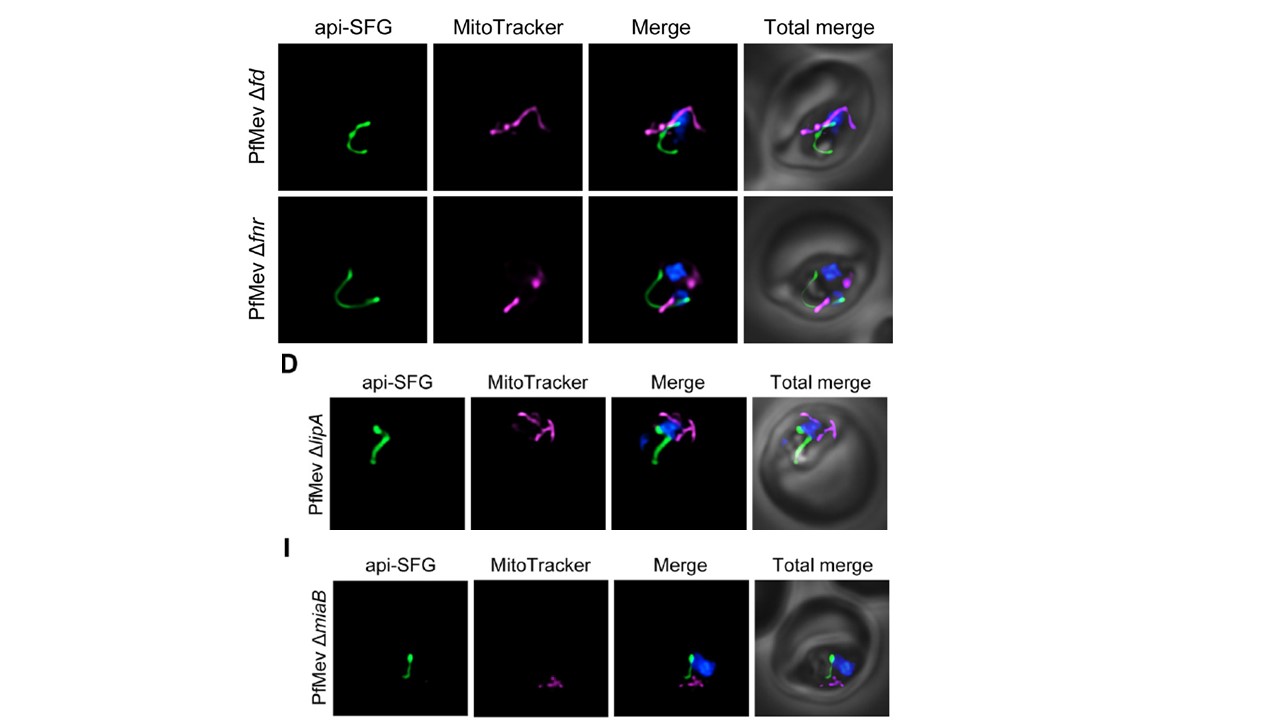Upper panel: We have constructed a P. falciparum parasite line (PfMev) encoding an alternative IPP biosynthesis pathway, which converts exogenously provided mevalonate into the isoprenoid precursors IPP and dimethylallyl pyrophosphate. Characterization of PfMev Dfd and PfMev Dfnr parasite lines. Live epifluorescence microscopy of PfMev Dfd (top) and PfMev Dfnr (bottom) parasites. In both parasite lines, a single intact apicoplast is observed. The PfMev parasite line also expresses the green fluorescent protein, super-folder green (SFG), with the N-terminal trafficking peptide of the P. falciparum acyl-carrier protein (api-SFG), which directs its trafficking to the apicoplast, thereby fluorescently labeling the organelle, MitoTracker (magenta) stains the mitochondrion, and nuclear DNA is stained with DAPI (blue). For both lines, imaging was done in the presence of mevalonate. Each image depicts a field of 10 mm by 10 mm. Middle pannel: Live epifluorescence microscopy of PfMev Dfd (top) and PfMev Dfnr (bottom) parasites. In both parasite lines, a single intact apicoplast is observed. The api-SFG protein (green; see Materials and Methods for details on api-SFG) marks the apicoplast, MitoTracker (magenta) stains the mitochondrion, and nuclear DNA is stained with DAPI (blue). For both lines, imaging was done in the presence of mevalonate. Each image depicts a field of 10 mm by 10 mm. Lowe pannel: Live epifluorescence microscopy of the PfMev DmiaB parasite line, showing a single intact organelle. The api-SFG protein (green) labels the apicoplast, the mitochondrion is stained with MitoTracker (magenta), and nuclear DNA is stained with DAPI (blue). These parasites were imaged in the absence of exogenous mevalonate. Each image depicts a field of 10 mm by 10 mm.
Swift RP, Rajaram K, Liu HB, Prigge ST. Dephospho-CoA kinase, a nuclear-encoded apicoplast protein, remains active and essential after Plasmodium falciparum apicoplast disruption. EMBO J. 2021 40(16):e107247. PMID: 34031901
